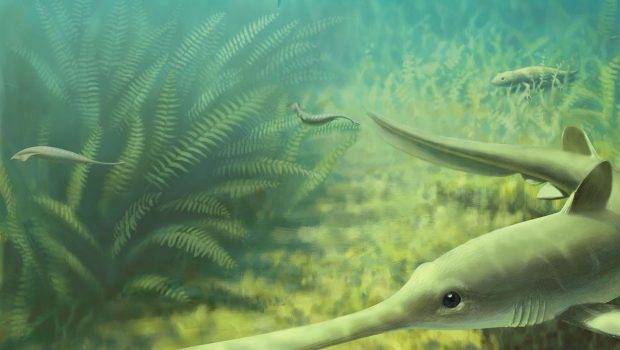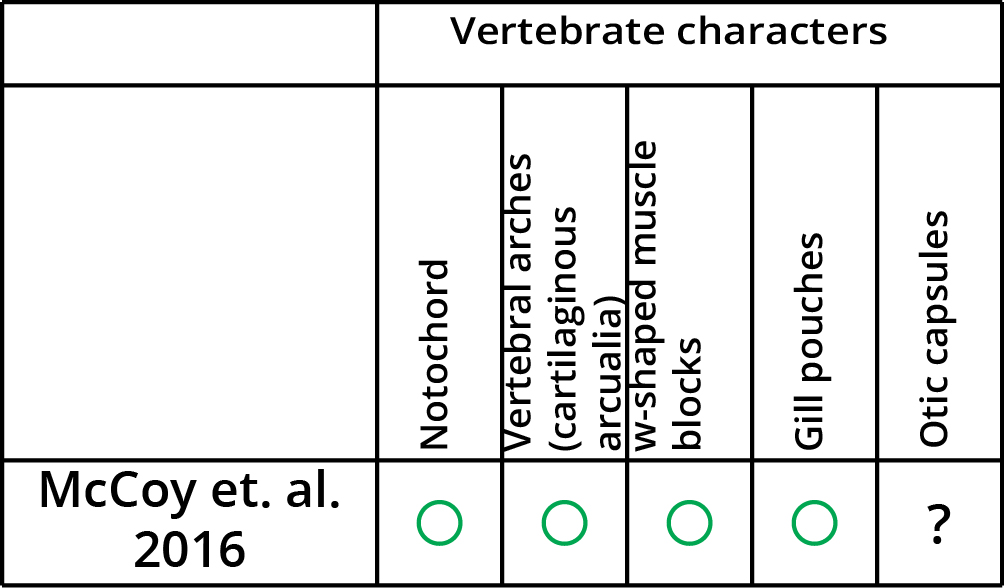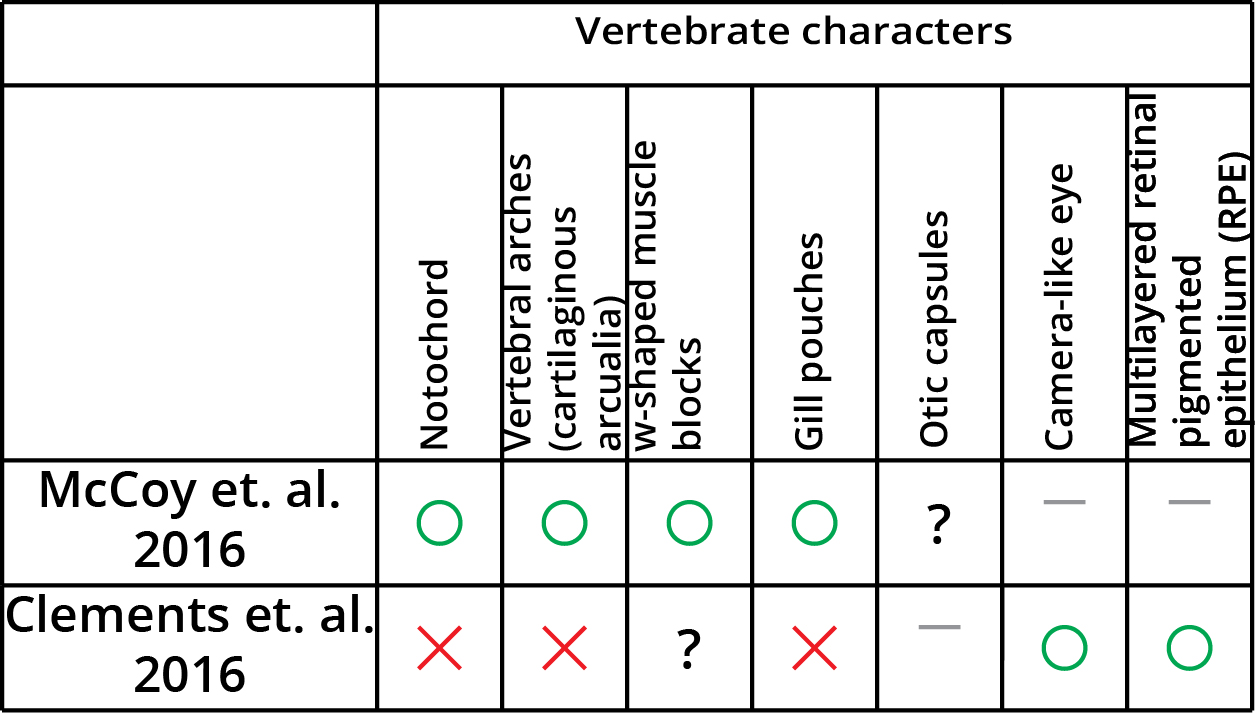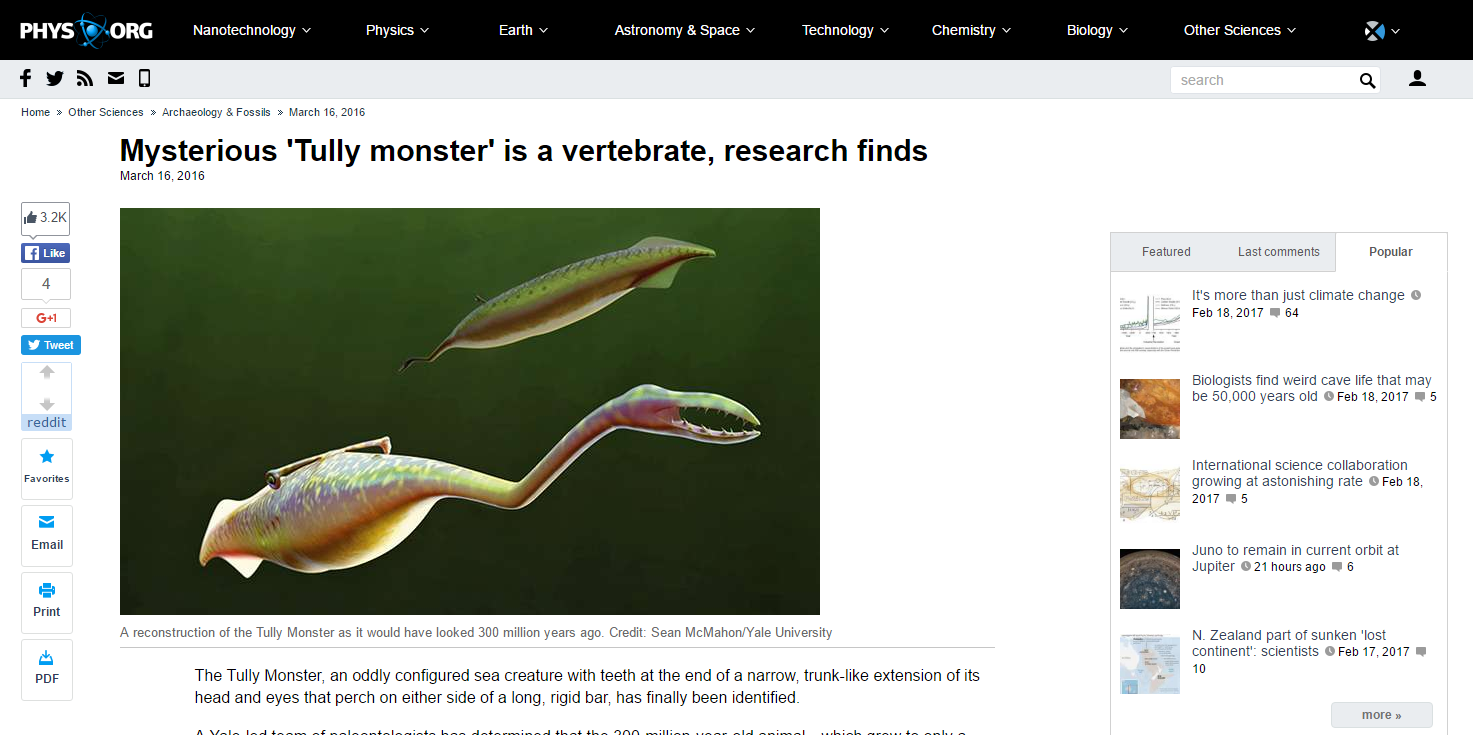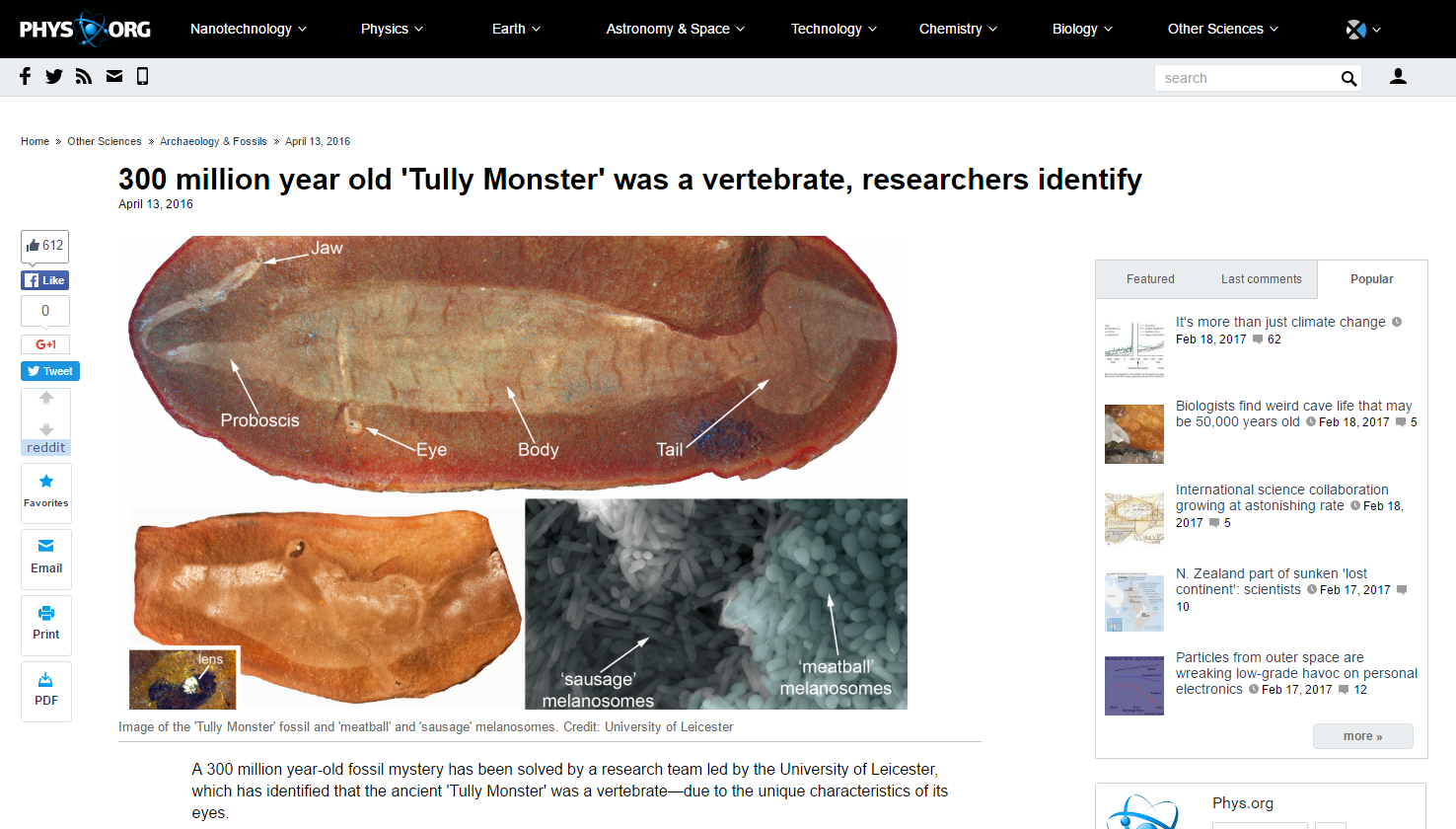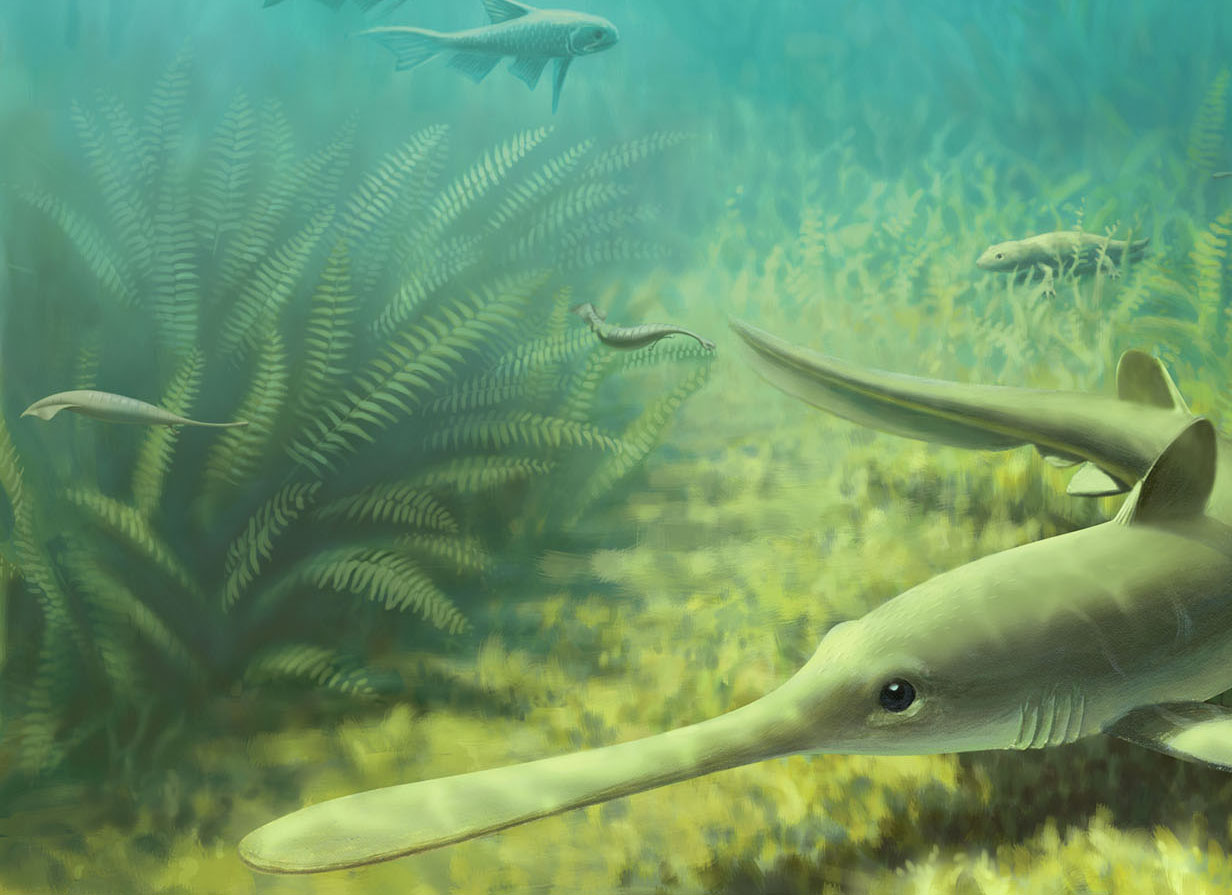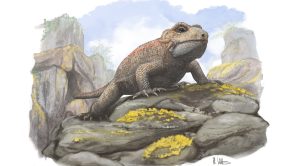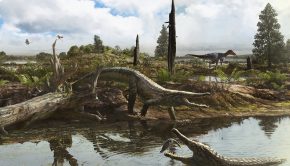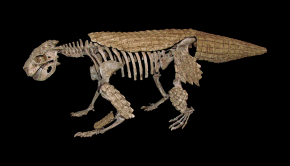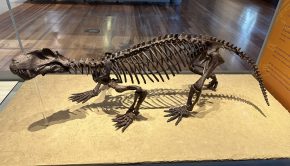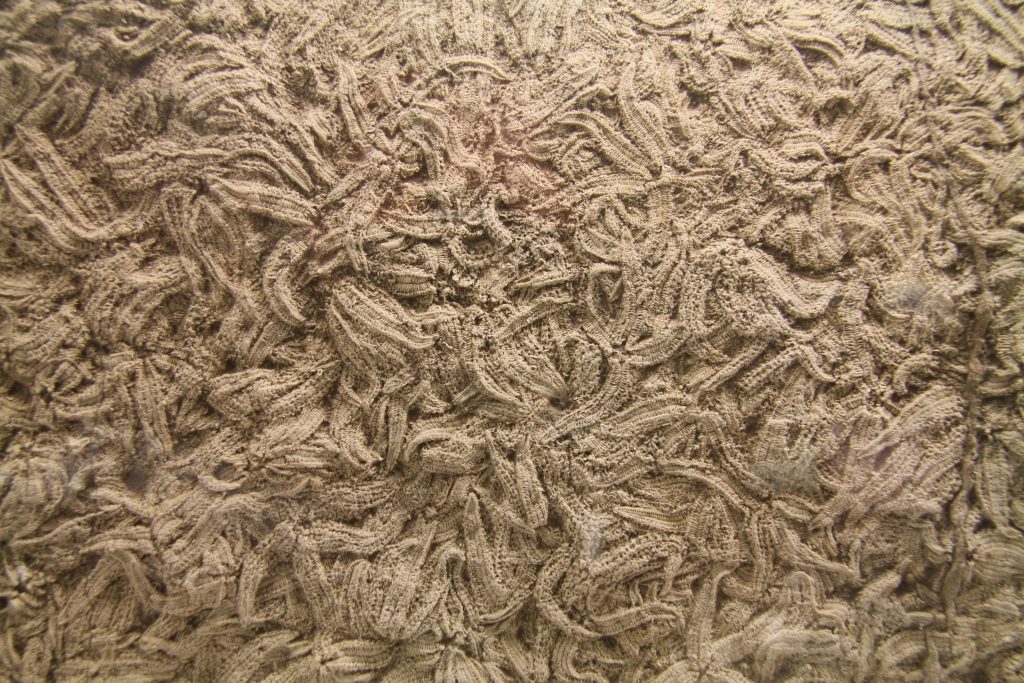Is the Tully Monster a Vertebrate after all?
Tullimonstrum gregarium, the ‘Tully Monster’, is an enigmatic fossil from the Late Carboniferous Mazon Creek lagerstätte, Illinois, USA. This soft-bodied animal is instantly recognisable by its ‘torpedo-shaped’ body ending in a tail; its long, elbowed, proboscis with a toothed ‘jaw’ at the end; and its eyes positioned on the end on a rigid bar. In fact, its body is so unique that positioning it on the tree of life has proven very difficult.
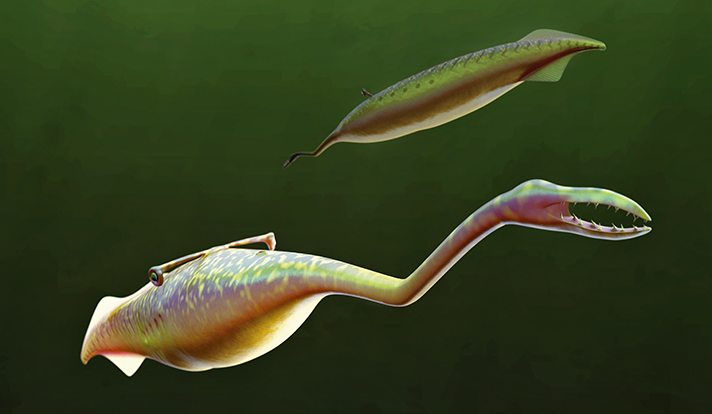
A reconstruction of the Tully Monster as it would have looked 300 million years ago, swimming in the Carboniferous seas. (Illustration by Sean McMahon / Yale University)
Since its discovery in the 50s, this animal has eluded any kind of consensus as to which group of it belongs to. It was initially described as a worm, but over the years, different researchers have suggested that it might alternatively be an arthropod, a mollusc or, most recently, a vertebrate.
I remember being taught about it in undergraduate palaeontology lectures and how we were told of the mystery surrounding its identity. It was suggested to us that it was probably an arthropod: an off-the-cuff remark thinking retrospectively, but I’ve spent the time since my undergrad degree considering that to be the case. It therefore came as quite a surprise, when a few months ago, the ‘true identity’ of Tullimonstrum was revealed.
Speaking to Episode 51 interviewee and Palaeo After Dark host, Dr James Lamsdell, I was told of a new paper he was involved in that was reinterpreting the Tully Monster. He suggested I interview the lead author Dr Victoria McCoy, who was fantastic in accommodating this, and we managed to record the interview on the same day the paper was released. The next day Palaeocast released Episode 62: The Tully Monster.

a, A phylogenetic analysis of chordates including Mazon Creek taxa (blue text) grouped T. gregarium with the lampreys (yellow). b, Reconstruction of Tullimonstrum as a stem lamprey. c, Tullimonstrum, FMNH PE 40113, oblique lateral view (also Extended Data Fig. 2a): eyebar, Eyb; myomeres, My; gill pouches, GP; caudal fin, CF; notochord, No; otic lobe, OtL and optic lobe, OpL of brain; and dorsal fin, DF. d, Line drawing: black, teeth; brown, lingual organ; light grey, eyebar; dark green, gut and oesophagus; red, notochord; light green, brain; orange, tectal cartilages; pink, naris; purple, gill pouches; yellow, arcualia; dark blue, myosepta; blue with black stripes, fins with fin rays. Scale bar, 10 mm. From McCoy et. al. 2016.
In their study, McCoy et. al. 2016 studied over 1200 specimens and highlighted many characters that identified it as a vertebrate (see fig. X). These included the presence of a notochord and cartilaginous arcualia, forming a rudimentary spinal column (simplistically speaking); w-shaped muscle blocks, which had formerly been considered to be segments; and gill pouches. When placed in a phylogenetic analysis of early vertebrates, Tullimonstrum was found to be a stem-lamprey (meaning it resolved closer to lampreys than any other group).
This research made a huge impact in the media, with many outlets reporting on how this decades-old mystery had finally been solved, but the story turned out to be far from over. Following the release of Episode 62, I discovered that the McCoy paper had been released early online, a week before the physical print of the journal. In the same print issue there was another independent study of the Tully Monster and the two were printed back-to-back.
The lead author of this second paper was Tom Clements, a PhD student at the University of Leicester, and he was kind enough to join me for our subsequent podcast: Episode 63: The Return of the Tully Monster, which was released alongside the article. In this other study, the researchers focussed on details of the Tully Monster’s eyes.
It was demonstrated that in their small, black, camera-like eyes, were preserved two distinct morphologies of melanosomes: melanin (pigment) synthesising organelles. The shape of melanosomes is known to correlate directly to pigment colour they produce and in Tullimonstrum, these two melanosome morphologies were arranged into two separate layers. This layering was interpreted to be a represent a multi-layered retinal pigment epithelium (RPE): a structure known only in vertebrates.
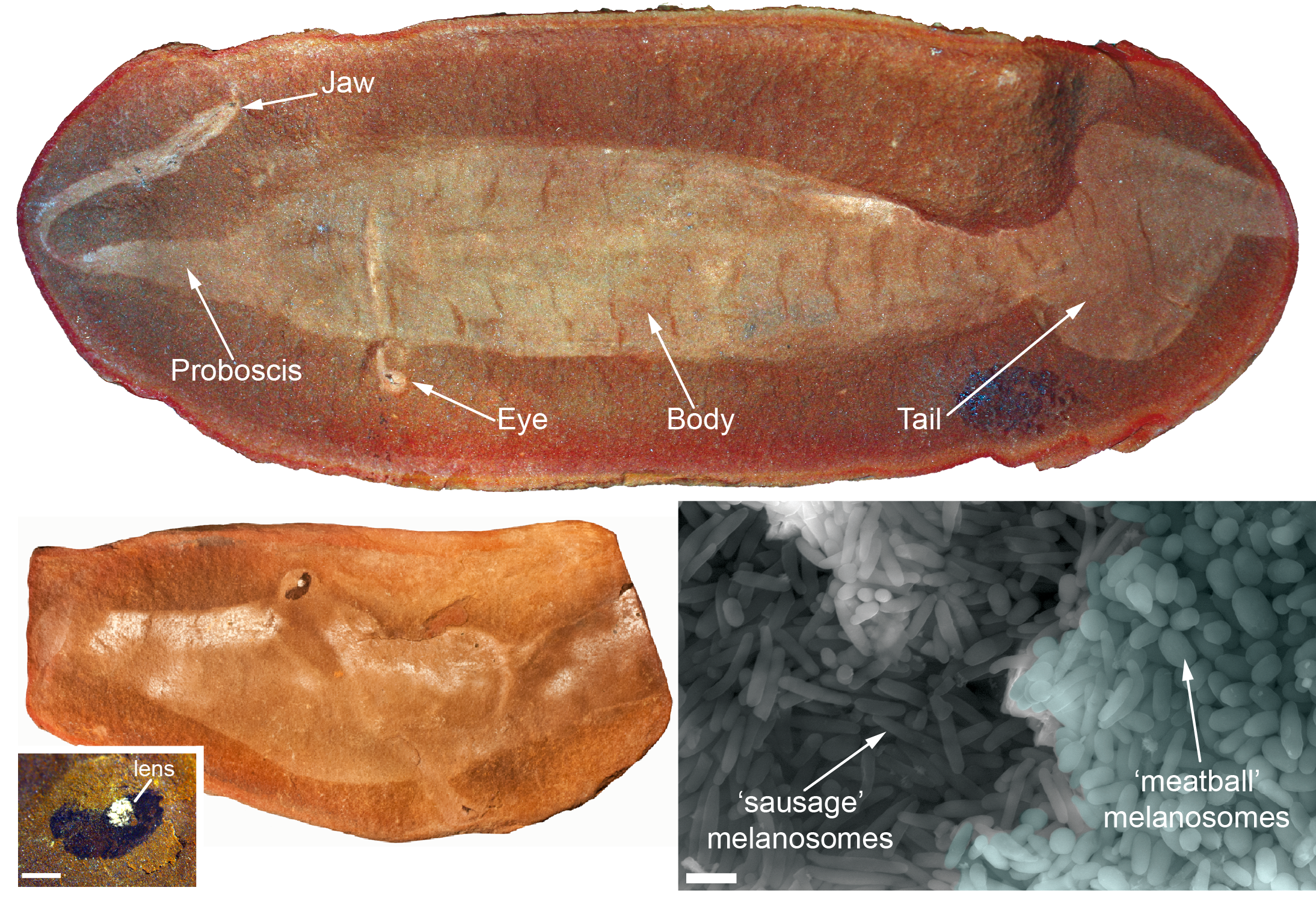
Similar information was recovered from the Tully monster (top). Examples of the of an incomplete Tully showing an eye with an infilled lens (bottom left). A scanning electron microscopy image of the melanosomes found in Tullimonstrum’s eye showing the two morphologies of melanosome (bottom right). The ‘meatball’-shaped melanosomes have been false-coloured to differentiate them from the ‘sausage’-shaped ones. From Clements et. al. 2016
The results of the Clements et. al. paper corroborated the findings of McCoy et. al., in that both concluded the Tully Monster was a vertebrate, albeit for different reasons and by different methods. It therefore might have seemed superfluous to have released an additional episode of Palaeocast, delivering the same conclusions, immediately after the first. It was my intention however to demonstrate that science is a process and that that is something that the media fail to reflect. In hindsight, I may have tried to convey that message so emphatically, that I gave the impression that the McCoy paper had been superseded, so for that I apologise to the authors and any listeners who understood that as the sentiment behind the episode.
Academic research presents its conclusions objectively, but we understand that there are unwritten caveats: conclusions are based on current observations but are subject to re-evaluation and reassessment upon the discovery of new evidence. These caveats are lost in the translation of academic article to press release and then again from press release to the written article. Research is therefore falsely presented as conclusive, having reached its terminus.
Having presented their previous reports as conclusive, the media were now faced with having to present the same conclusions again, but told through a different line of evidence, so how would they weigh up the relative merits of each paper? A quick search online shows many outlets didn’t, choosing instead to treat the two articles in apparent isolation. The second story was again presented as conclusive with no discussion of previous research.
Such criticism of the media is relevant, in the context of this blog, given the latest revision of Tullimonstrum, which is released in the Journal Palaeontology today. Responding to the emerging consensus of the Tully Monster’s vertebrate affinity, a group of early-vertebrate workers have claimed that it doesn’t belong to this group at all.
Professor Lauren Sallan (Palaeocast Episode 6: Early vertebrate evolution and extinction) and colleagues (including Dr Sam Giles, best known for being a L’Oréal-UNESCO Women in science Fellow, 2016 the voice of the Palaeocast credits) argue that the vertebrate synapomorphies (the characters shared by all vertebrates) of the previously mentioned studies were open to alternative interpretation or were incongruent with what is already known about vertebrates and that some of the methods used were poorly implemented.
For example, they suggest that notochords, as presented by McCoy et. al., cannot have been correctly identified because other fossils of unequivocal vertebrate affinity, found in the same deposits, do not have their notochords preserved. Furthermore, they state that a notochord is not just a vertebrate identifier, but are present in all chordates and, more likely, all deuterostomes (the group including all chordates, echinoderms and acorn worms, amongst others), leaving the Tully Monster open to a non-vertebrate interpretation. The pigments in eyes of Tullimonstrum, as identified by Clements et. al., were similarly likened to other groups, such as molluscs, leaving a question mark over whether this line of evidence must suggest a vertebrate affinity.
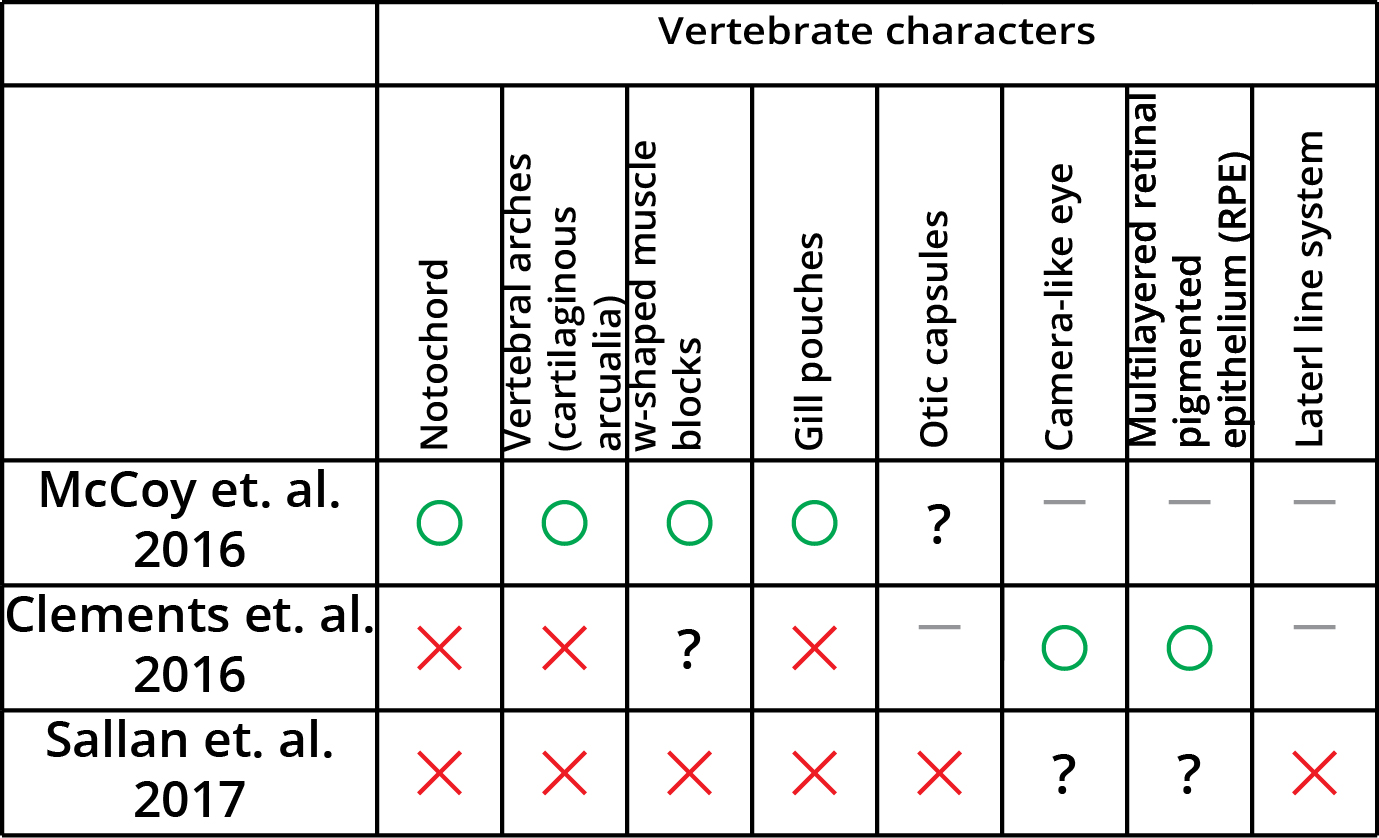
Summary of vertebrate characters presented in McCoy et. al. 2016, Clements et. al. 2016 and Sallan et. al. 2017.
It goes beyond the purpose of this blog article to summarise the claims within each paper, consider their relative merits and weigh in on the identity of Tullimonstrum. What I believe is important is to convey is that the Sallan paper is just the most recent work on the identity of the Tully Monster and, since this blog is released on the day of publication, it is currently without reply. There simply isn’t enough time for the research to be read and for counter-arguments to be formed; the latest research always gets the last word, at least for a short while.
This creates an issue in a world of instantaneous news, where the media occupies a unique position in being able to gain access to academic articles before their publication. By the time an academic has read a paper and drawn their conclusions, people all over the world have already have read the paper and had their conclusions drawn for them by proxy.
What’s interesting in this case is that Sallan et. al., despite being able to suggest what Tullimonstrum, is not, are unable to offer up an alternative hypothesis of what it is. How then will the media, that has such a tendency to produce self-contained and conclusive articles, respond to a story that is so evidently in transit? This latest piece of research, for now, is an equally valid step towards the understanding of the true identity of the Tully Monster. Will articles weigh up the relative lines of evidence; will they choose to vilify previous articles, presenting the Sallan paper as conclusive; or will this latest article simply go ignored because it cannot present an answer? Only time will tell.
In time, I have no doubt that the true identity of the Tully Monster will be discovered, but for now, it has regained some of its enigma, refusing to be tied to any one branch of the tree of life. I don’t see this as a bad thing. We have lost an emerging consensus, but have regained a mystery, even if the status quo only proves to only be temporary. The counter-arguments are already being prepared.
Blog written by Dave Marshall. Dave is the producer of Palaeocast and a Palaeobiology PhD student at the University of Bristol.

